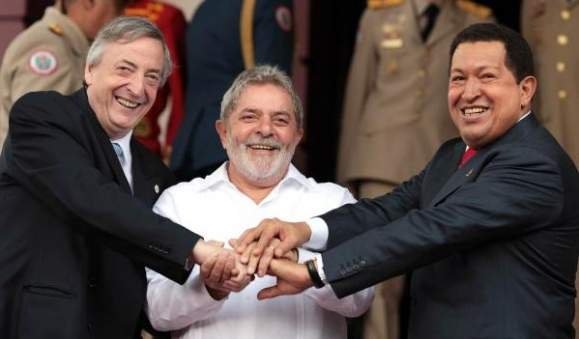
The new Latin American left, in all its shades of red or pink, has lately been experiencing perhaps its roughest string of months since it came to power. From embattled Venezuela to the possible political death of the Workers’ Party in Brazil, from the demise of the Kirchners in Argentina to Bolivia’s own turmoil, the situation is grim. The fight hasn’t ended, nor is it only in the halls of government. Debates about its death, possibilities, and resurrection will probably go on for the rest of this century.
Yet Latin American history has likely never seen such an unbroken decade of leftist governments collaborating, building an anti-imperialist front, working with social movements to fight capitalism, constructing a South-to-South economic bloc, overturning the nightmares of the dictatorships, and opening up new political spaces for marginalized people. There were moments, maybe even particular days, that typify this, like political and movement gatherings in Porto Alegre in 2002 or the continental rallying cry in Mar del Plata to kill the Free Trade Area of the Americas in 2006.
The leftist wave wasn’t without its grave pitfalls and perhaps structural flaws. Maybe it will take this crisis to build an even more enduring political front and movement alternative. Or maybe the right will keep on swooping in and turning back every last gain. Whatever happens, somewhere in the last 15 years or so could be considered a golden age for the region’s broad left. The illusions of the era lent a good deal to its shine, but really it was about hope. And hope is rare in these days of deepening political labyrinths.
***
Upside Down World editor Benjamin Dangl is the author of The Price of Fire: Resource Wars and Social Movements in Bolivia and Dancing with Dynamite: Social Movements and States in Latin America. He is a doctoral candidate in Latin American history at McGill University. Twitter: @bendangl
